Messier 13
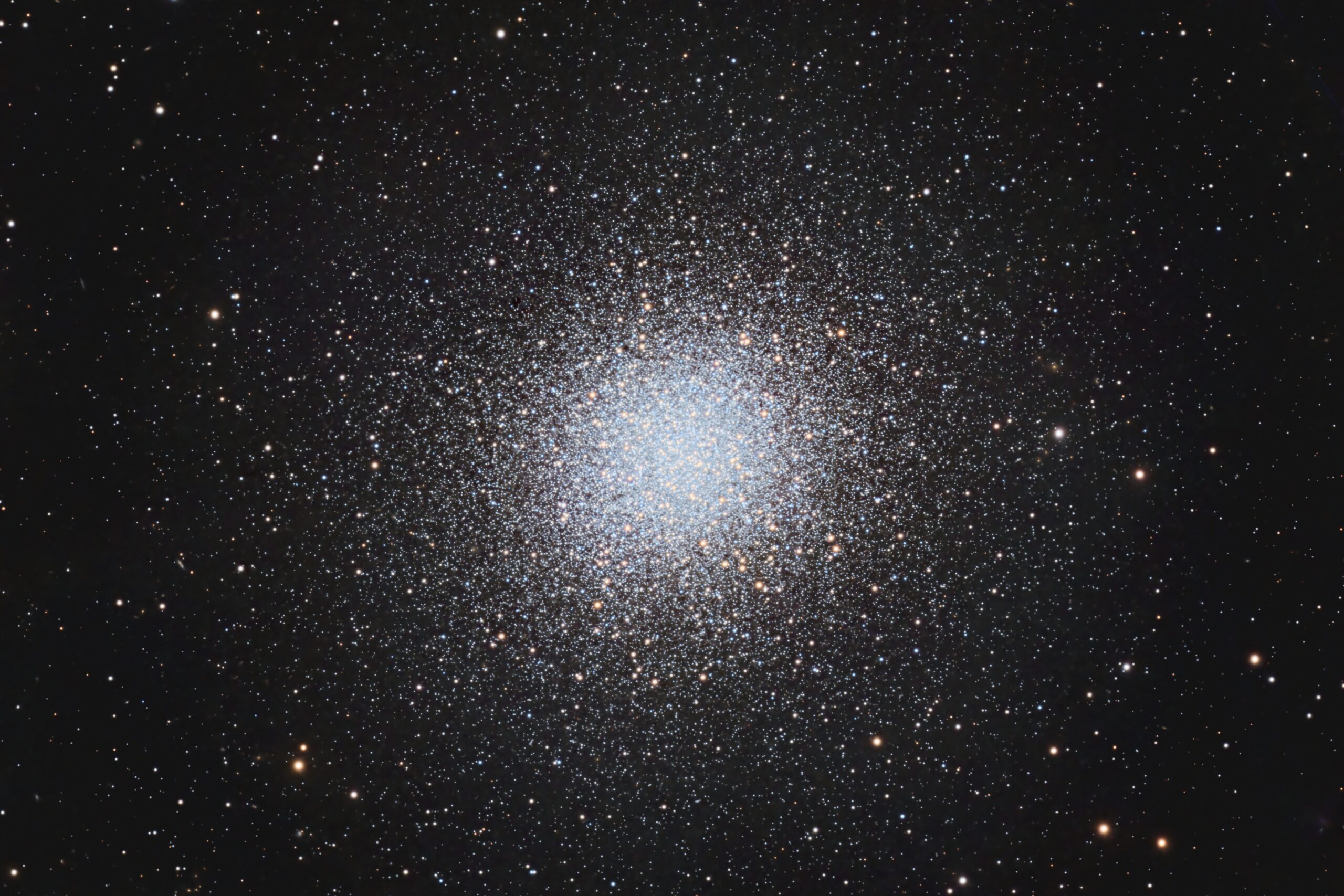 Click image for full size version
Click image for full size version
June 9, 2024
There are about 150 globular clusters orbiting the main part of the Milky Way, and they are common around other galaxies too. These objects are star clusters of a few hundred thousand to a few million stars and they are very old objects. The Hercules Cluster, M13, is arguably the finest globular cluster visible from the northern hemisphere but lots of people, including me, have other favourites, like M3, M5, and M22. M13 lies about 22,000 light years away from us, and is about 2/3 the width of the full Moon. It contains about 600,000 stars and is about 168 light years across. The night sky would be very interesting from a star in the core of that cluster!
M13 is visible to the naked eye in moderately dark skies, obvious in binoculars, pretty in a small scope and stunning in a big scope. It’s one of my favourite objects to look at through any instrument, and I’ve imaged it several times before, for example in 2021.
One of the features I always look for at the eyepiece and in images of M13 is a slightly dark propeller shape, which is quite obvious in this image a little below left of centre. North is up in this image.
Tekkies:
Acquisition, focusing, and control of Paramount MX mount with N.I.N.A., TheSkyX. Guiding with PHD2. Primalucelab low-profile 2″ Essato focuser and ARCO rotator. Equipment control with PrimaLuce Labs Eagle 4 Pro computer. All pre-processing and processing in PixInsight. Acquired from my SkyShed in Guelph. Data acquired under little to no moonlight, good transparency and average seeing on the night of May 30-31, 2024.
Celestron 14″ EDGE HD telescope at f/11 (3,912 mm focal length) and QHY600M camera binned 2×2 with Optolong filters.
16 x 5m and 17 x 1m Red = 1hr 37m
16 x 5m and 10 x 1m Green = 1hr 30m
16 x 5m and 10 x 1m Blue = 1hr 30m
Total: 4hr 37m
Preprocessing: The WeightedBatchPreProcessing script was used to perform calibration, cosmetic correction, weighting, registration, local normalization, and integration of all frames. The 60s and 300s frames were integrated together into one master for each filter.
RGB master: An RGB image was made from the Red, Green and Blue masters using ChannelCombination in RGB mode.
Synthetic Luminance: A SynthL was made by integrating the three masters, weighted by SNR, with no pixel rejection.
Gradient Removal: DBE was used to remove gradients from the RGB and SynthL masters.
Colour Calibration: ColorCalibration was used to calibrate the RGB master.
Deconvolution: BlurXterminator was applied to the RGB and SynthL masters with Automatic psf , star sharpening set to 0.5, and non-stellar set to 0.5.
Linear Noise Reduction: NoiseXterminator was applied to the RGB and SynthL masters with settings Amount=0.9 and Detail=0.15
Stretching: HistogramTransformation was applied to the RGB and SynthL masters to make pleasing images. Approximate background level after stretch was 0.1 for SynthL and 0.09 for RGB.
Nonlinear Processing
Combinining SynthL and RGB: LRGBCombination was used to replace the lightness channel of the RGB image with the SynthL.
Nonlinear Noise Reduction: NoiseXterminator was used to reduce noise in the background areas of the SynthRGB master with Amount=0.9 and Detail=0.15.
Re-stretch: HistogramTransformation was used to boost contrast by moving the dark point to the toe of the histogram and slightly decreasing the mid-point slider.
Final Steps: Background, globular cluster, and star brightness, contrast, hue, and saturation were adjusted in several iterations using CurvesTransformation with masks as required. ICCProfileTransformation (sRGB IEC61966-2.1; Relative Colorimetric with black point compensation) was applied prior to saving as a jpg. The finder chart was made using the FindingChart process.



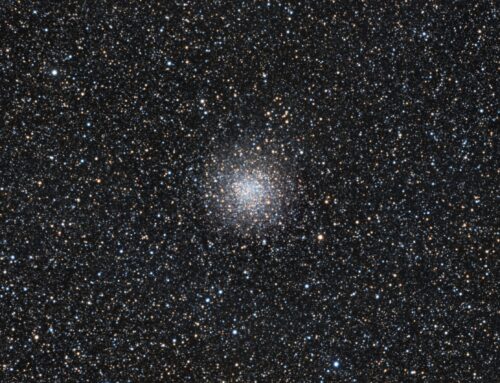
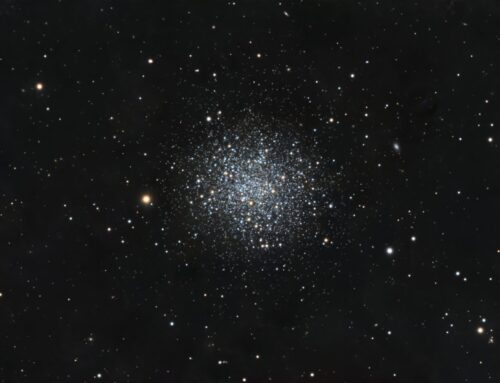
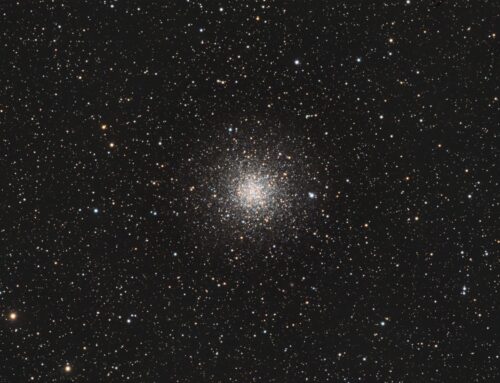
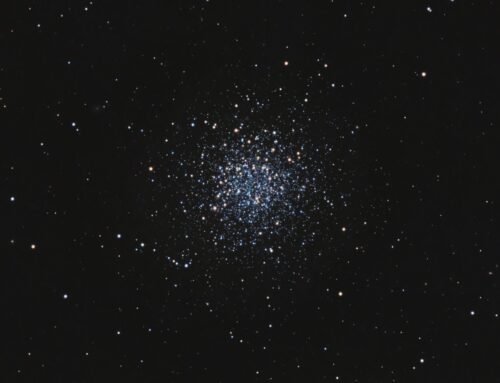
Leave A Comment